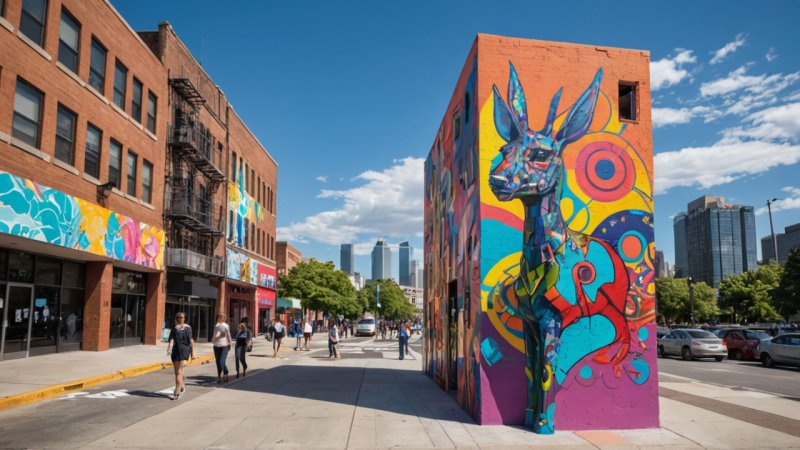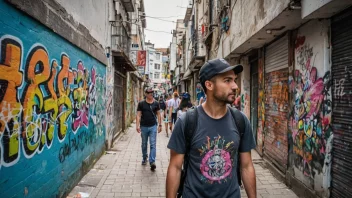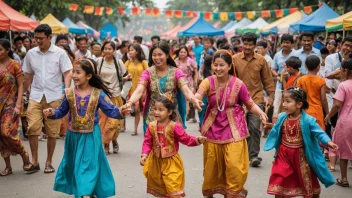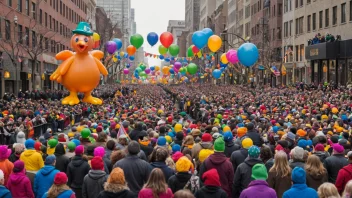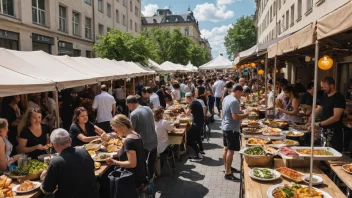Public art installations have become a vibrant part of urban landscapes around the globe, transforming city streets into open-air galleries that engage and inspire communities. From monumental sculptures to interactive murals, these artworks not only beautify spaces but also foster dialogue, reflect cultural identities, and challenge perceptions. In this article, we will delve into the significance of public art, explore renowned installations worldwide, and provide insights on how to experience these urban treasures firsthand.
The Significance of Public Art
Public art is more than just aesthetically pleasing; it plays a crucial role in urban development and community engagement. Here are several reasons why public art is significant:
- Cultural Reflection: Public art serves as a mirror to the community's identity, reflecting its history, values, and aspirations. It can celebrate local heritage or highlight social issues that matter to residents.
- Community Engagement: By involving local artists and communities in the creation of public art, cities foster a sense of ownership and pride. Engaging public art processes can bring diverse groups together, encouraging dialogue and collaboration.
- Economic Impact: Vibrant public art attracts tourists and stimulates local economies. Cities known for their art scenes often see increased foot traffic, benefiting businesses and promoting cultural tourism.
- Environmental Enhancement: Public art transforms mundane spaces, enhancing the aesthetics of urban areas. It can reclaim forgotten spaces, turning them into vibrant hubs for social interaction.
Exploring Notable Public Art Installations Worldwide
Across the globe, cities have embraced public art, creating iconic installations that draw visitors and contribute to local culture. Here are some noteworthy examples:
1. The Gates, New York City, USA
In 2005, artists Christo and Jeanne-Claude transformed Central Park with their installation, 'The Gates.' This project consisted of 7,503 saffron-colored fabric gates lining the park’s walkways, creating a stunning visual spectacle. The installation invited visitors to engage with the park in a new way, evoking feelings of warmth and joy. The project was temporary yet left a lasting impression on the public’s perception of art in urban spaces.
2. The Berlin Wall Murals, Berlin, Germany
The East Side Gallery in Berlin stands as a living monument to freedom, featuring murals painted on a remaining section of the Berlin Wall. Artists from around the world contributed their visions of peace, unity, and resistance, turning this historical site into a vibrant canvas. The murals not only commemorate the past but also encourage discussions about identity and social change in contemporary society.
3. The Cow Parade, Various Locations
The Cow Parade is a unique public art phenomenon that has traveled to cities around the world, featuring life-sized cow sculptures painted by local artists. Each cow reflects the culture and character of its host city. This playful and engaging initiative not only beautifies urban spaces but also raises funds for local charities. The Cow Parade demonstrates how art can connect communities through creativity and humor.
4. The Kiss, New York City, USA
Located at the intersection of 43rd Street and 7th Avenue, 'The Kiss' is a larger-than-life sculpture by artist Alfred Eisenstaedt, inspired by a famous photograph of a sailor kissing a nurse in Times Square on V-J Day. This installation not only serves as a tribute to the historical moment but also invites passersby to reflect on themes of love, joy, and celebration. It’s a reminder of the power of art to capture human emotion in public spaces.
How to Experience Public Art Installations
Experiencing public art installations can be a rewarding part of urban exploration. Here are some tips to enhance your experience:
1. Research Local Art Tours
Many cities offer guided tours focused on public art. These tours can provide context and background on installations, enhancing your understanding of the artists' intentions and the community's reactions. Look for walking tours, bike tours, or even self-guided maps available through local tourism boards.
2. Attend Public Art Events
Public art events, such as festivals, unveilings, and workshops, are great opportunities to engage with artists and other art enthusiasts. These events often include interactive components, allowing you to participate in the artistic process.
3. Use Technology
Many cities are leveraging technology to enhance the public art experience. Mobile apps can provide augmented reality features that allow you to interact with installations or learn about their histories. Social media platforms often feature art hashtags, making it easy to discover new pieces and share your experiences.
4. Be Open to Interpretation
Public art is subjective; each viewer may have a different interpretation. Take your time to reflect on what you see, how it makes you feel, and what it might mean for the community. Engaging in discussions with others can deepen your understanding and appreciation.
The Future of Public Art
As cities continue to evolve, the role of public art will likely expand. Here are some trends shaping the future of public art installations:
- Interactivity: Emerging technologies, such as virtual and augmented reality, are making public art more interactive, engaging audiences in innovative ways.
- Community-Driven Projects: More cities are prioritizing community involvement in the creation of public art, ensuring that installations resonate with local cultures and histories.
- Environmental Art: As sustainability becomes a critical concern, artists are increasingly using eco-friendly materials and themes in their work, raising awareness about environmental issues.
- Diversity and Inclusion: There is a growing focus on representing diverse voices in public art, ensuring that installations reflect the rich tapestry of communities.
Conclusion
Public art installations enrich urban spaces, offering dynamic ways for individuals to engage with their surroundings and each other. From fostering community pride to stimulating economic growth, the significance of these artworks cannot be understated. As you explore cities around the world, take the time to seek out public art, participate in local events, and reflect on the narratives these installations convey. Ultimately, public art serves as a reminder of the power of creativity and expression in shaping our environments and experiences.
